Vesuvio volcano shaped pasta from Campania
Inspired by the currently dormant Vesuvius volcano that towers over Naples and dominates the surrounding area, vesuvio pasta is a fabulous modern pasta shape that looks beautiful and holds sauces really well. Vesuvio pasta is a short pasta with a larger base gradually spiraling up to a thinner tip. Some people also say it looks like a spinning top!
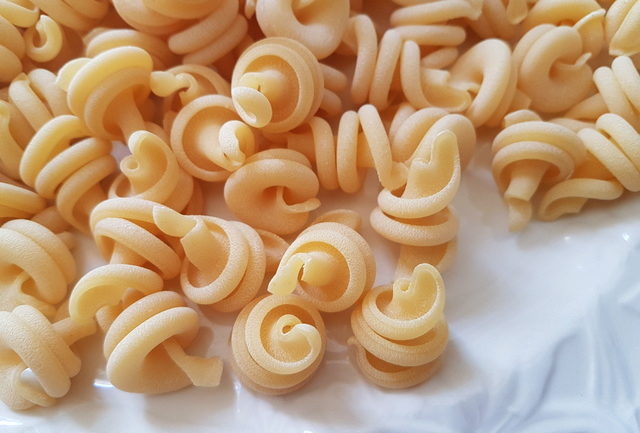
Pasta di Gragnano
Although not an antique traditional pasta shape, vesuvio pasta is only made by pasta makers in Campania, particularly Gragnano. Gragnano is located about 30 kilometres southeast of Naples. It is probably the most well-known Southern Italian pasta making town. Dried pasta from Gragnano is considered one of the best in Italy. In fact, for pasta makers to name their product ‘pasta di Gragnano’, the pasta must be produced in a legally defined area in and around the Bay of Naples and it must be made by mixing Italian durum wheat flour with the calcium poor water of the Monti Lattari. The dough is extruded through rough bronze dies and dried at low temperatures in the mountain air. The result? Fabulous pasta!
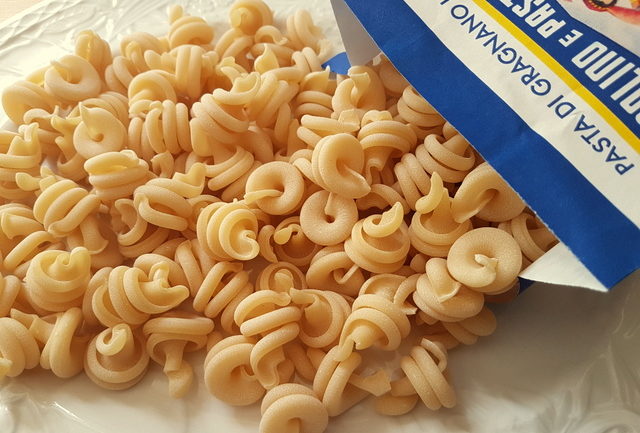
Vesuvius one of the most dangerous volcanoes in the world!
The skyline of Naples and most of Campania is dominated by Vesuvius. This volcano, after which vesuvio pasta is named, is best known because of the eruption in 79AD that destroyed the cities of Heraculaneum and Pompeii, killing around 30,000 people! Vesuvius is considered one of the most dangerous volcanoes in the world because of its proximity to Naples and other towns. The last big eruption was in 1944 but there have been a number of earthquakes in the area around the volcano since then. Although now considered dormant, many believe it’s not a question of if Vesuvius will erupt again but only when!
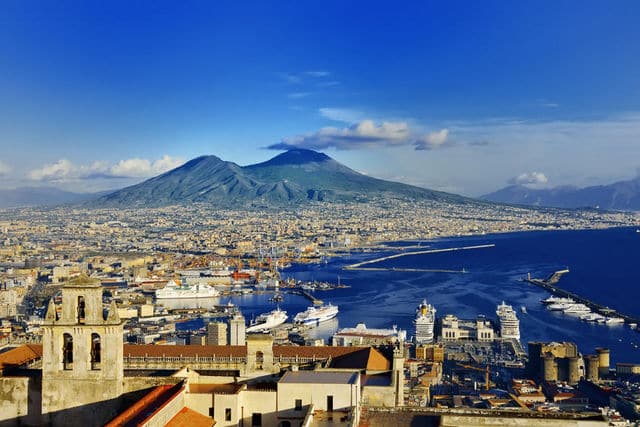
You may wonder why people would live on the slopes of an active volcano. I certainly did when I first moved to Italy. My hubby is from Sicily and grew up on the slopes of Mount Etna, Italy’s largest active volcano. There are a number of reasons but historically the main reason is that the slopes and land around a volcano are very fertile with nutrient rich soil. Consequently harvests of the various fruits, vegetables and grains grown are healthy and rich!
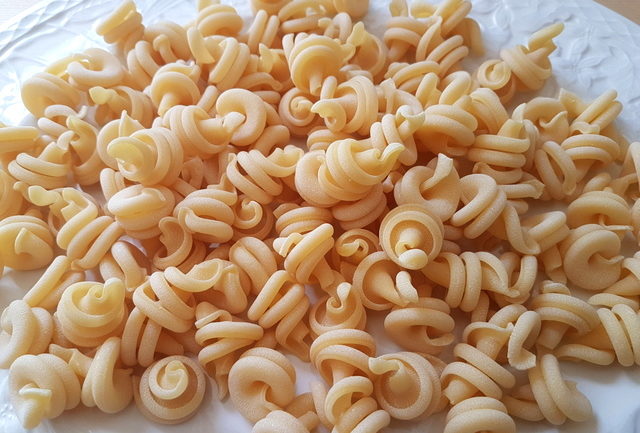
Back to Vesuvio pasta.
As far as I know vesuvio pasta can be found in many countries outside of Italy. Quite a few pasta makers produce it and export it overseas. If you can’t find it in your local store, search online. Among the companies I know make vesuvio pasta are Afeltra, Gentile, A. Amodio and Faella. All obviously pasta producers from Campania and Gragnano.
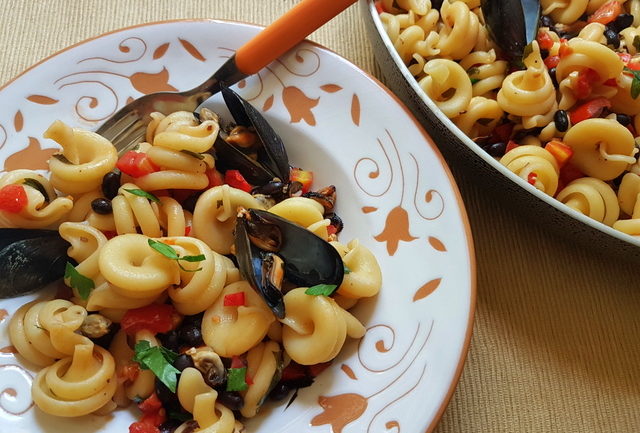
The first recipe I have posted using vesuvio pasta is a typical recipe from Campania for pasta with mussels and beans (pasta con cozze e fagioli). The vesuvio pasta was perfect for this dish. If you try it, you’re bound to agree! Because this is a modern pasta shape, there aren’t specifically traditional recipes for it. However, I think it would be a great substitute in fusilli recipes like this fusilli with tomatoes, basil and burrata cream or baked pasta recipes such as this pasta baked with gorgonzola, pancetta and mushrooms.
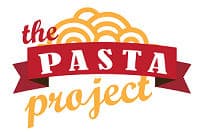

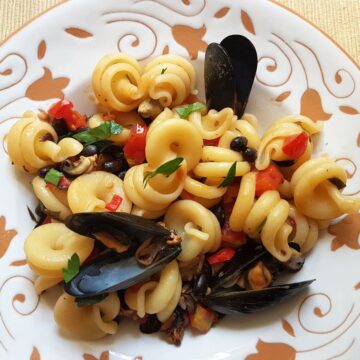
Connie L Guisinger says
I bought your Pasta from a Home Goods Store in the USA. This is by far the best Pasta I have ever had. I prepared the pasta for my Son and his family. My Grandkids loved it and the shape of the pasta. We topped it with a creamy garlic sauce. Thank you so much I am going back to the store to purchase more of your products. Warm hugs from Niles Michigan, USA.
Aimee Thornton says
Hi, you mention that this volcano shaped pasta also resembles a spinning top (if inverted). My husband & I recently fell in love with a pasta salad made at our local deli, and the ingredients on the label list "trottole" pasta. When I googled this, I read that the word translates as spinning tops. In trying to find this pasta in dry form to purchase, I came upon vesuviotti which to me looks the same as trottole. I'm certain that trottole and vesuviotti are the same, but my husband says they look different to him - that the broad end of the latter is coiled more loosely that the trottole. I think it just depends on the maker/manufacturer. . . or perhaps one is a larger version of the other. Can you settle this debate?
Jacqui says
Hi Aimee, thanks for your comment. You are right 'trottle' means spinning tops. Vesuvio or vesuviotti are named after the volcano above Naples, Vesuvius. I have never used trottle and vesuviotti aren't very common in Italy. In theory and from a linguistic point of view this pasta should be little vesuvio. It seems to me that there isn't actually a standard shape for any of these types but in general 'trottole' have more 'rings' and a tighter shape than Vesuvio and from what I can see from pics the same goes for vesuviotti. I did some research and couldn't find any pasta company that produces both trottle and vesuvio here. So it's one or the other! It is often the case that pasta names are changed for export. For example, what we call dischi volanti here in Italy are often sold abroad as 'messicani! I did discover that one of my favourite pasta company, Pastificio dei Campi makes trottole! Def worth trying if you can find it!
David says
Surprisingly, I just found a package from
La Fabbrica della Pasta di Gragnano, at T.J. Maxx!!